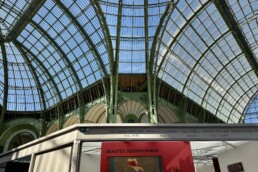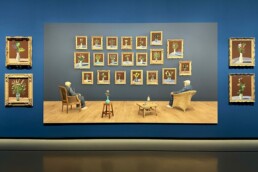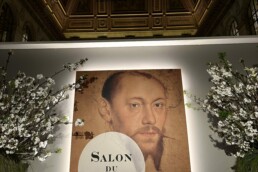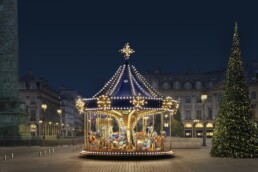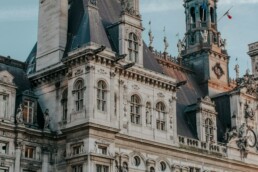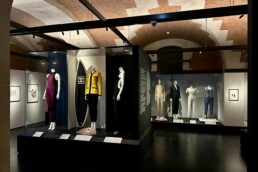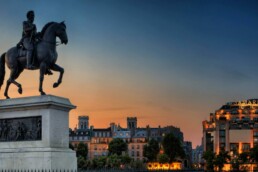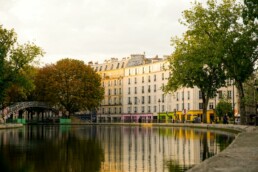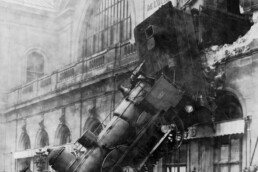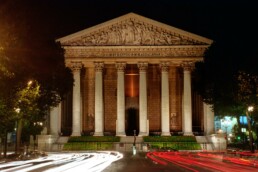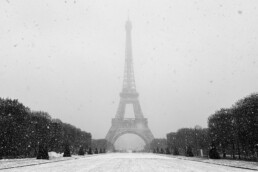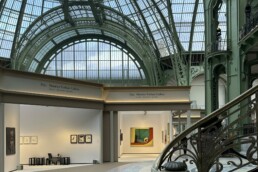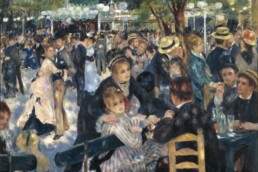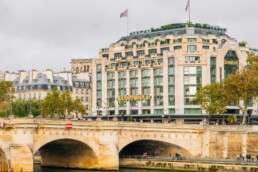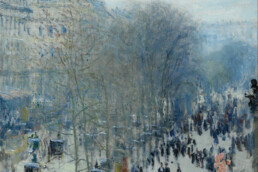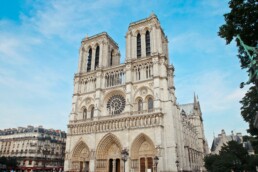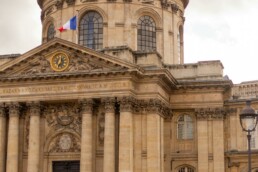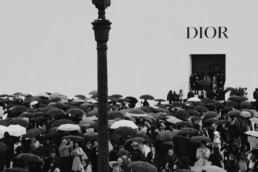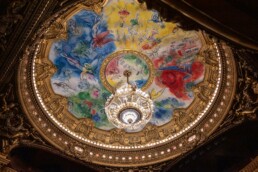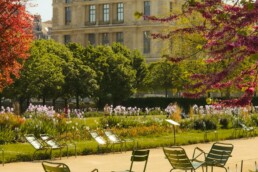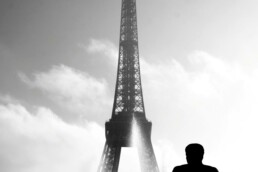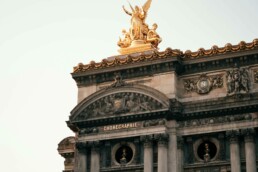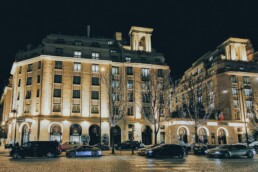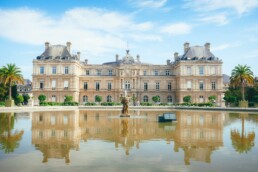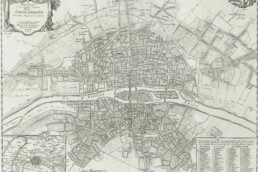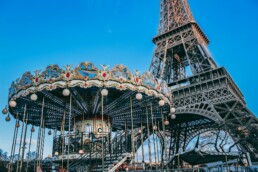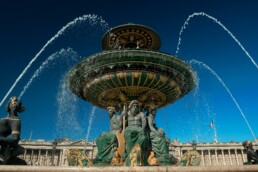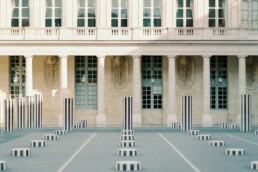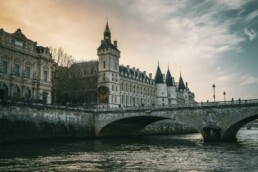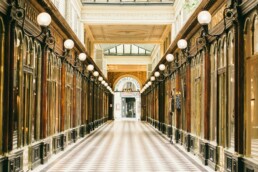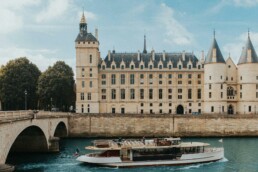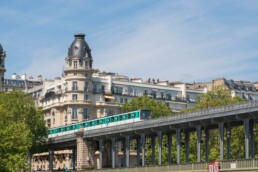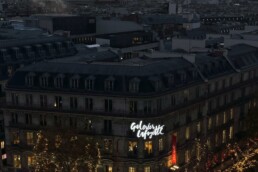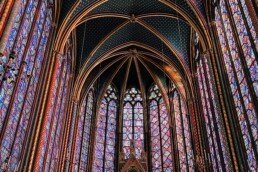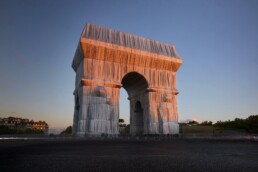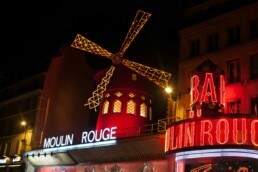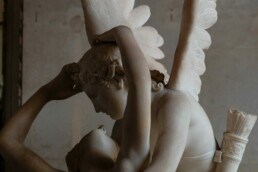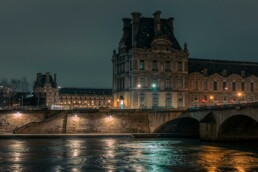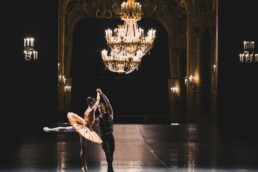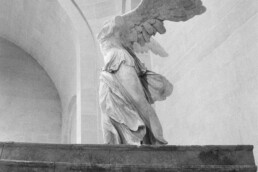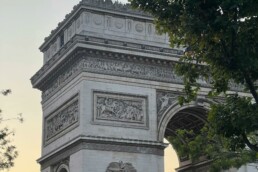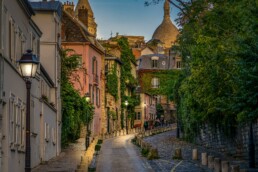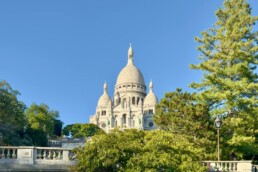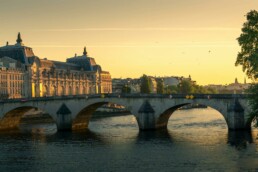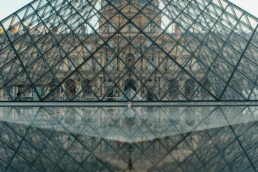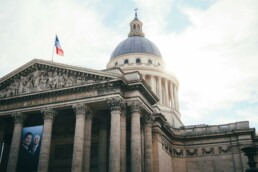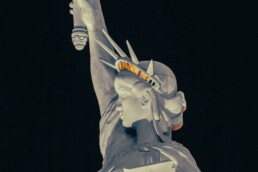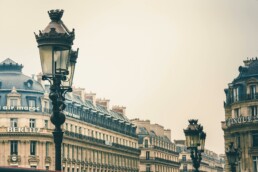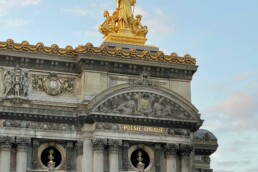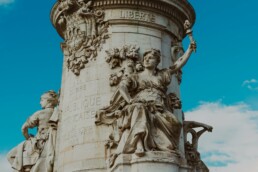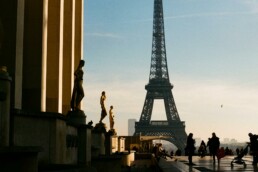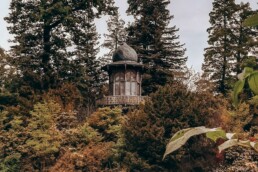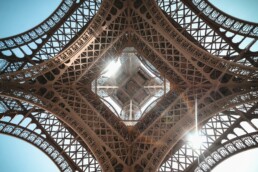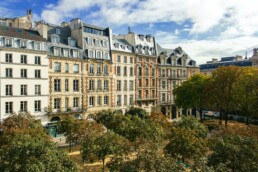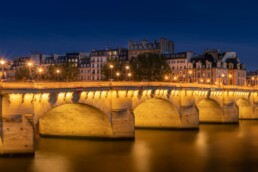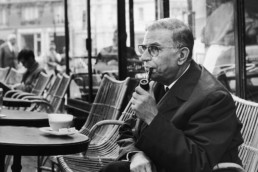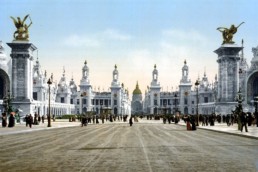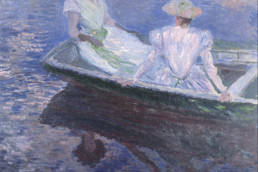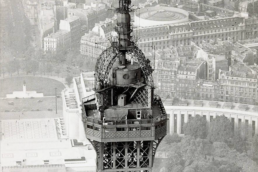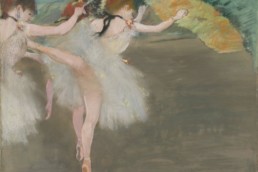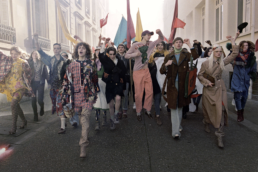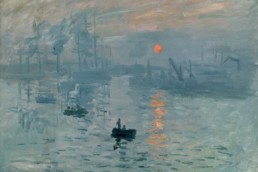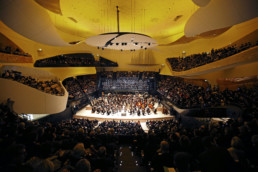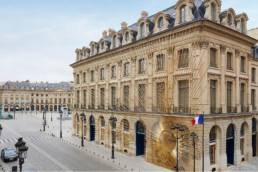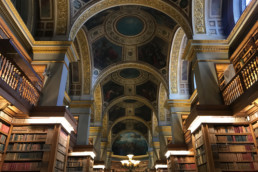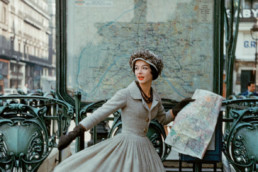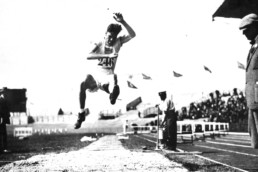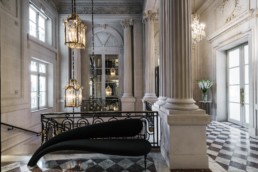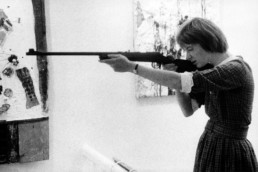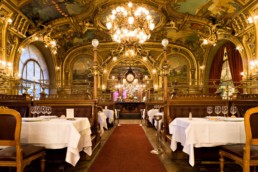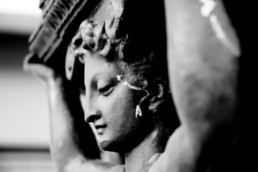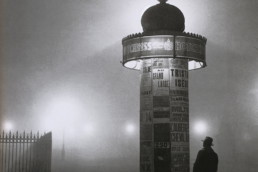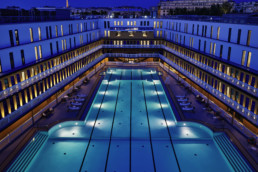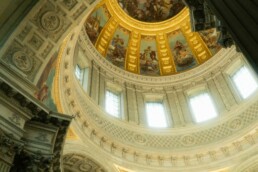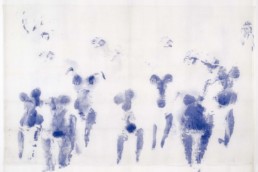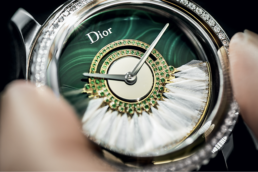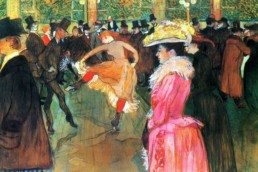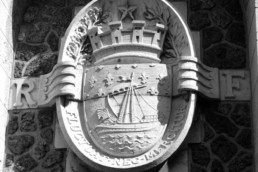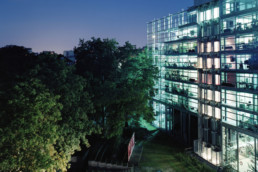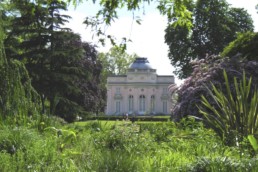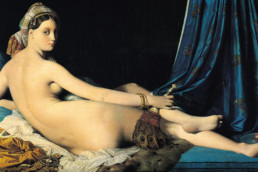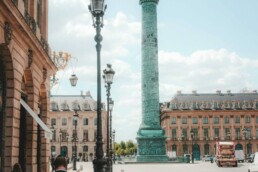Under the ever-changing sky of Paris, the Pont Alexandre III stretches with unparalleled elegance, casting an arch of grace over the Seine. Constructed at the close of the 19th century, this bridge is an architectural masterpiece, a subtle blend of metal and stone that symbolizes the union between France and Russia. As a nostalgic wanderer, I love to lose myself in the details of this structure, where each ornament, each balustrade tells a story.
The idea for this bridge emerged in 1896, as a prelude to the 1900 World’s Fair, marking a turning point in Franco-Russian relations. It was Tsar Alexander III who inspired its name, a testament to the friendship between the two nations. Inaugurated by his son Nicholas II, the bridge is a diplomatic gift, a testament to mutual grandeur and respect.
I recall my grandmother’s tales, evoking the effervescence of that era, when dreams were directed towards modernity and elegance. The gilded sculptures, the nymphs of the Seine, and the winged Pegasus that adorn the bridge add a touch of magic to this urban landscape. Every wrought-iron lamppost, every finely crafted detail is an invitation to contemplation and reverie.
Pont Alexandre III is more than a mere passageway; it is a true architectural poem. Its monumental columns, topped with allegorical figures, symbolize the arts, science, commerce, and industry, a homage to the spirit of progress of that century’s end. As I stroll along, captivated by the golden twilight playing on the Seine’s waters, I seem to hear the echo of past Parisians’ footsteps, their silent admiration for this masterpiece.
This bridge has also been the stage for intimate moments and grand scenes of Parisian life. It has witnessed royal processions, artist parades, triumphant marches, and popular demonstrations. Beneath its arches, barges glide silently, carrying the city’s secrets and whispers.
In contemplating Pont Alexandre III, one cannot help but feel a certain melancholy, that of ephemeral beauty, of the fragility of things in the face of time’s passage. Yet, it is also a celebration of persistence, of what remains despite everything, of the indelible trace left by generations of artisans and dreamers.
Thus, Pont Alexandre III is not merely a link between two banks, but a bridge thrown between the past and the present, a suspended walkway between history and modernity. It is a place where one comes to seek a piece of eternity, a fragment of a dream, a reflection of past grandeur and future hope. A place where each stone, each ornament tells a story, an invitation to rediscover, through the prism of nostalgia, the poetry and splendor of Paris.
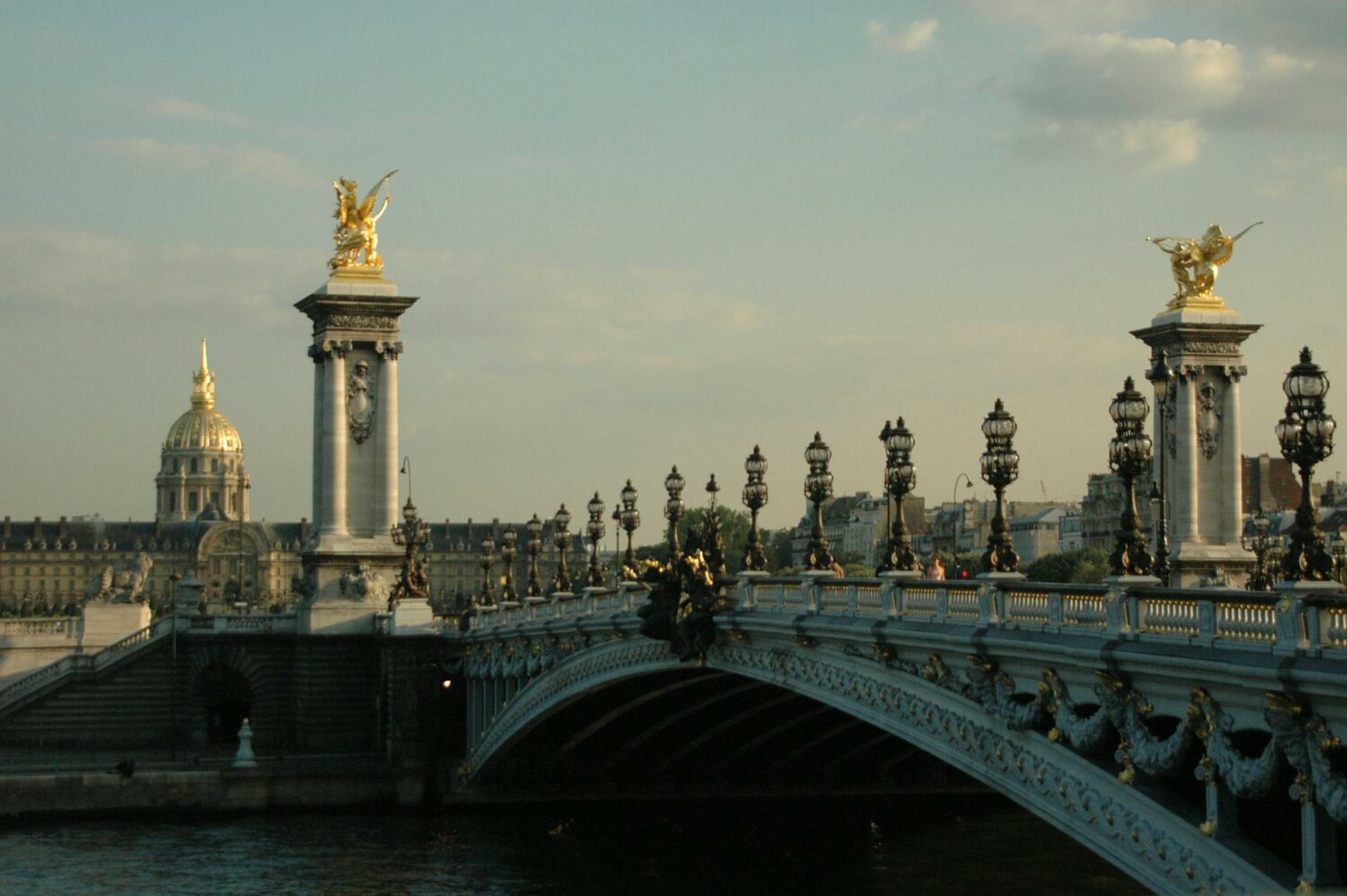
Lire également :
24 April 2025
Cycling Through Paris: An Urban Odyssey
23 December 2024
Paris by Night: Unveiling the McLaren 750S Magic
13 December 2024
Place Vendôme: The Louis Vuitton Carousel
28 November 2024
The Hôtel de Ville: Symbol of Resistance and Renewal
28 November 2024
Palais Galliera Presents: Fashion in Motion
25 November 2024
The Canal Saint-Martin: Memories Between Waters and Reveries
25 November 2024
The Poetry of Chaos: Montparnasse 1895
25 November 2024
The Church of La Madeleine
22 November 2024
The Magic of Paris in the Snow
22 November 2024
Fine Arts Paris: Under the Glass Dome of the Grand Palais
19 November 2024
The Passe-Muraille of Marcel Aymé
19 November 2024
Renoir : The Bal du moulin de la Galette
19 November 2024
The Enchanted Staircase of Gustave Moreau
18 November 2024
Au Consulat: The Soul of Montmartre Through the Ages
18 November 2024
La Samaritaine : Memory and Modernity
18 November 2024
Au Rocher de Cancale
14 November 2024
Monet : Boulevard des Capucines
13 November 2024
Notre-Dame de Paris: Chronicles of a Timeless Sentinel
13 November 2024
Echoes of Knowledge: The Institut de France
12 November 2024
The Grand Parisian Fashion Show: Upcoming Fashion Week Dates
12 November 2024
The Spirit of Liberty: Legends of the Bastille
12 November 2024
The Ceiling of the Opéra Garnier by Marc Chagall
12 November 2024
he Green Fermob Chairs: Memories from Parisian Parks
12 November 2024
The Esplanade of Trocadéro: A Window onto the Eiffel Tower
12 November 2024
The Angels of the Opéra Garnier: Guardians of Beauty
12 November 2024
George V: A Palace of Beauty and Tranquility
12 November 2024
Practical Guide: Taxis in Paris
12 November 2024
The Palais du Luxembourg: From Royal Residence to Senate Seat
12 November 2024
Plan of Paris 1676
11 November 2024
A Haven of Peace in the Heart of Paris: The Île Saint-Louis
11 November 2024
The Fountains of Place de la Concorde
11 November 2024
The Buren Columns: A Contemporary Dialogue with the Palais-Royal
11 November 2024
The Conciergerie of Paris
11 November 2024
The Véro-Dodat Gallery in Paris
11 November 2024
The Seine: The Elegant Lifeline of Paris
11 November 2024
The Booksellers of the Seine: Guardians of Dreams and Memories
11 November 2024
The Louis Vuitton Foundation: A Symphony of Glass and Light
11 November 2024
The Bir-Hakeim Bridge: A Symphony of Iron and Light
11 November 2024
Galeries Lafayette: Chronicles of Luxury and Memories
11 November 2024
The Sainte-Chapelle: Chronicles of Light and Mystery
9 November 2024
Wrapped Memories: Christo’s Arc de Triomphe
7 November 2024
The Moulin Rouge: A Parisian Nocturnal Epic
7 November 2024
Psyche Revived: A Journey Through Art and Love
7 November 2024
The Louvre: Between Fortress and Patronage
5 November 2024
Through the Veils of Creation: CHANEL and the Paris Opera
5 November 2024
Victory of Samothrace: Eternal Triumph at the Louvre
5 November 2024
The Napoleonic Legacy: The History of the Arc de Triomphe
5 November 2024
The Sacré-Cœur: A Story of Faith and Beauty
5 November 2024
The Gare d'Orsay: A Journey Through Time and Art
5 November 2024
The Louvre Pyramid: Symbol of Architectural Boldness
5 November 2024
The Pantheon: A Republican Sanctuary in the Heart of Paris
5 November 2024
Baron Haussmann: Architect of Parisian Metamorphosis
5 November 2024
The History of Place de la République: A Parisian Evocation
5 November 2024
The History of the Trocadéro: A Parisian Memory
5 November 2024
The History of the Bois de Boulogne: A Parisian Reminiscence
5 November 2024
The History of the Eiffel Tower: A Memory of Iron and Light
5 November 2024
The History of Place Dauphine: A Parisian Evocation
5 November 2024
The History of the Pont Neuf: A Parisian Reminiscence
29 May 2019
Jean-Paul Sartre
29 May 2019
The Yves Saint Laurent Museum in Paris
28 May 2019
Geneviève Grad
25 May 2019
L’exposition universelle de 1900
23 May 2019
On the Boat by Claude Mone
13 January 2019
Last Year at Marienbad: Between Dream and Reality
10 September 2018
Degas’ Dancers: A Reflection on the Ephemeral and the Timeless
29 May 2018
Gucci’s “Paris 68” Campaign
8 February 2018
Claude Monet: Impression, Sunrise
10 December 2017
The Philharmonie de Paris: Modern Harmony and Musical Heritage
20 November 2017
Louis Vuitton Vendôme by Peter Marino
3 August 2017
The 1924 Summer Olympics in Paris
20 July 2017
The Crillon Hotel in Paris
17 July 2017
La fondation Brigitte Bardot
29 June 2017
Molitor: The Dawn of the Bikini in Paris
21 June 2017
The History of the Morris Columns in Paris
21 June 2017
De Fursac: The Quintessence of Parisian Suits
21 June 2017
Molitor: Paris’ Timeless Oasis
20 June 2017
The Dome of Les Invalides in Paris
23 May 2017
The Equestrian Statue of Joan of Arc
22 May 2017
The “Collier de Chien” Bracelet by Hermès
29 April 2017
Henri de Toulouse-Lautrec : Le bal au Moulin Rouge
23 April 2017
The History of “Fluctuat nec mergitur” in Paris
23 March 2017
The Museum of Modern Art in Paris
21 January 2017
The Bagatelle Park in the Bois de Boulogne
21 January 2017
An Odalisque at the Louvre
21 January 2017




